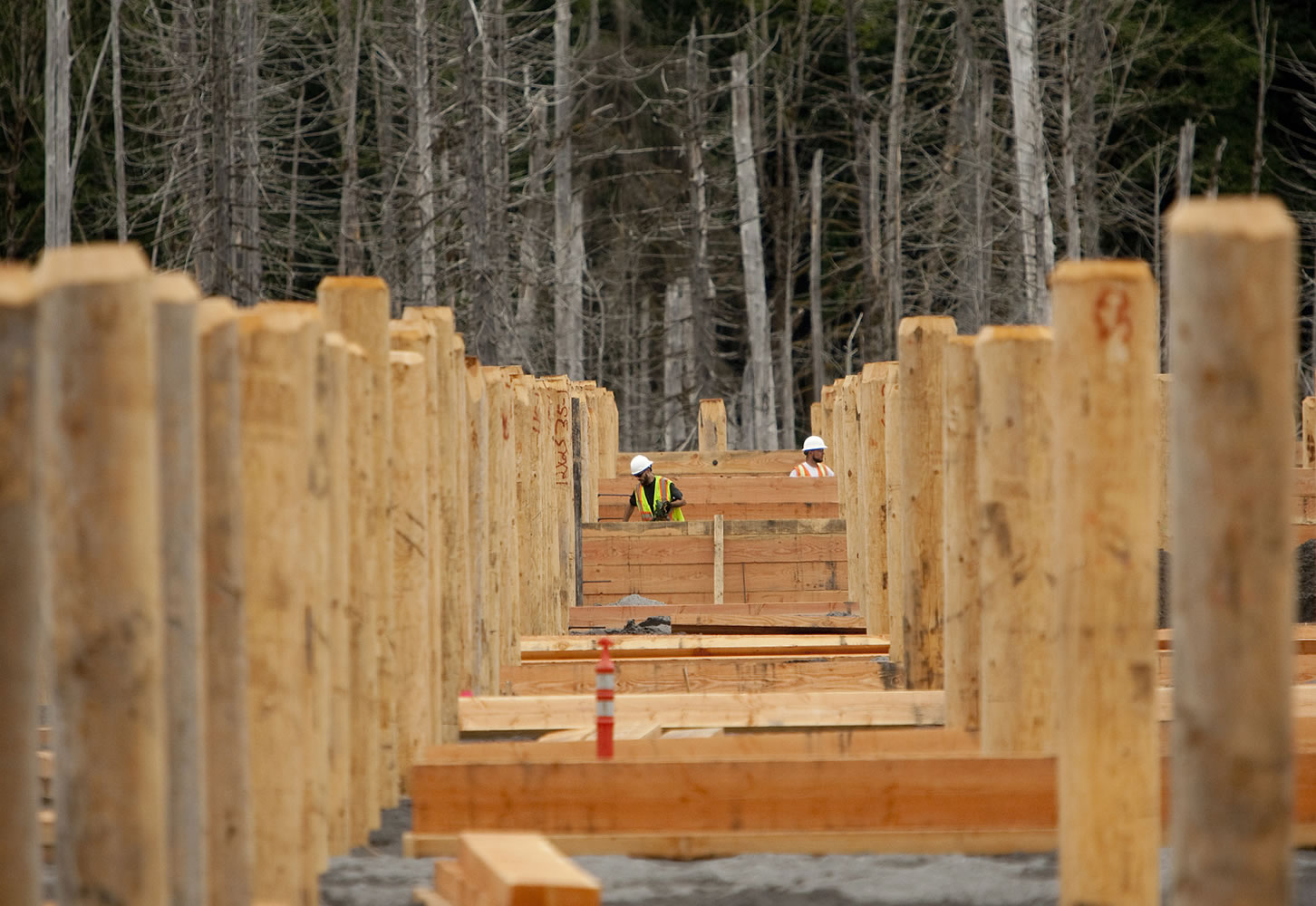LONGVIEW — Work last summer to elevate a sediment control dam near Mount St. Helens is helping prevent flooding downstream on the Cowlitz River at Castle Rock and Lexington, the Corps of Engineers said.
Engineers raised the spillway on the Toutle River dam 7 feet. The bigger reservoir trapped nearly 1 million cubic yards of sediment washing off the volcano in the past year — enough to cover four football fields about 100 feet deep, engineers estimate.
The heightened dam should trap clogging sediment for several more years, The Daily News reported Thursday.
“We think it is making a difference. That’s why we were anxious to get it in place,” said Tim Kuhn, Cowlitz-Toutle project manager for the corps’ Portland District.
The work bought time for the corps to studying longer-term options. They include raising the spillway higher again, dredging and building a series of wooden weirs across the Toutle Valley to trap the silt.
“Based on what we’ve seen, we’re pretty comfortable,” Kuhn said. “We’re fairly confident we’re in fine shape for several years.”
Unchecked, tons of debris from the volcano’s 1980 eruption would choke the Cowlitz River, reducing its capacity and increasing the flood danger.
The 125-foot high dam was built across the north fork of the Toutle River in the mid-1980s. At the time it was expected to control silt for up to 50 years, but it was largely filled in two decades.
The amount of sediment washing downstream prompted last summer’s $4.5 million project. The Toutle River is still moving an estimated 4 to 5 million cubic yards of fine silt a year. Much of that remains suspended in the water until it is carried into the Columbia River and eventually into the Pacific Ocean.



